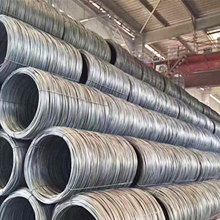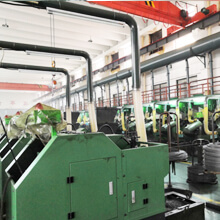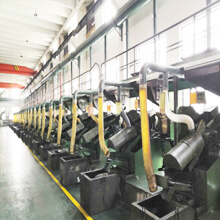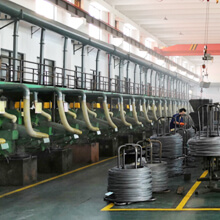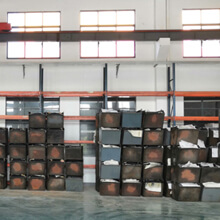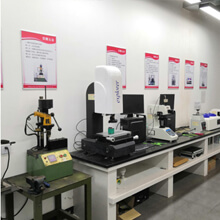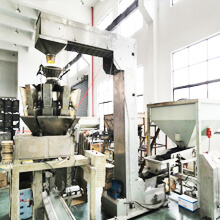Surface treatment of black screws
Commonly used surface treatment processes for screws include oxidation, electrophoresis, electroplating, and dacromet, and common black screws are mainly used to fix the bottom or rear shell of black or other dark electrical appliances. Also use black screws. It mainly has several processes such as oxide black, black nickel, black zinc and electrophoresis black.
1. Oxidized black screws:
It is divided into normal temperature blackening and high temperature blackening. Taking normal temperature blackening as an example, the process flow is: chemical degreasing - hot water washing - cold water washing - rust removal and acid etching - cleaning - blackening - cleaning - over oil or over sealing. It is an oxide film formed by sodium hydroxide and sodium nitrite at a high temperature of more than 100 degrees.
The main component of the oxide film is iron tetroxide (Fe3C4), the film uniformity is only 0.6-1.5um, the corrosion resistance is relatively poor, and the neutral salt spray is only about 1-2 hours when it is not oily or sealed. About 3-4 hours after oiling. There are no screws using this process for small household appliances. In terms of appearance color, oxide black is close to black zinc and electrophoretic black, but not as bright as black zinc and electrophoretic black.
2. Electroplated black screws:
There are two types of black electroplating, black zinc and black nickel. The process principle is basically the same, but the formula of the electroplating solution and the post-treatment frame or passivation solution are different. The chemical properties of zinc are lively, and it is easy to oxidize and darken in the atmosphere, and finally produces "white rust" corrosion. It is the passivation treatment of the zinc layer. The passivation film can be divided into white passivation (white zinc), light blue (blue zinc), black passivation (black zinc), military green passivation (green zinc), etc.
2.1 Black zinc plated screws:
The electroplating process is: degreasing-cleaning-weak acid etching-electro-galvanizing-cleaning-passivation-cleaning-drying-passing frame; the last frame is mainly black oil (a kind of paint), Tianna water, rubber water The main function is to improve the black uniformity and brightness of the screw surface and improve the anti-corrosion ability of the screw. The anti-neutral salt spray ability after passing through the frame is more than 20. If it can be oiled and anti-corrosion Ability can also be improved.
The black zinc screw neutral salt spray test is 12 hours, the industry level is relatively high, and there is no unqualified phenomenon in the routine test. It is darker than black nickel in appearance, and is closer to oxide black and electrophoretic black. The method of distinguishing it is to grind a few times on white paper to expose the bluish white of zinc.
2.2 Black nickel plating:
The electroplating process is: degreasing-cleaning-weak acid activation-cleaning-copper plating bottom-activation-cleaning-plating black nickel-cleaning-passivation-cleaning-drying-over-the-frame, the black nickel plated from the black nickel plating solution The nickel layer generally contains 40%-60% nickel, 20%-30% zinc, 10%-15% sulfur, and about 10% organic matter.
During the electroplating process, the sulfur in the thiocyanate ions is converted into sulfide ions, and forms black nickel sulfide with nickel. The copper bottom is added in the process. The main function is to make nickel plating easier in the later process and to improve the corrosion resistance of the screw. Generally, the thickness of the copper bottom is about 1 micron. If the thickness of the copper bottom is increased, the corrosion resistance can be improved, but The ingredients will increase accordingly.
After the thorough experiment of the screws used by various electroplating manufacturers, the industry-level resistance to neutral salt spray is generally 6-12 hours. If the ratio accuracy of various additives used in electroplating and the quality of raw materials are improved, the quality of raw materials can be improved. In the nickel plating process, general electroplating manufacturers will over oil or seal in order to improve corrosion resistance, and the screws used cannot use over oil to improve the salt spray time considering the corrosion effect on plastic parts. The time of the neutral salt spray test is 8 hours. It is unstable in routine experiments, and there have been several batches of routine neutral salt spray failures.
It is easy to distinguish from the appearance because black nickel is darker than other black zinc, oxide black and electrophoretic black.
3. Electrophoresis black:
Electrochemical method is used to deposit colloidal particles of organic resin on parts to form organic coating layers of various colors. Electrophoresis black is used more in the industry. Take black process as an example: degreasing - cleaning - phosphating - electrophoretic paint - drying. It can be divided into anodic electrophoresis (resin becomes negative ions after ionization) and cathodic electrophoresis (resin becomes positive ions after electrophoresis). Compared with paint technology, it has better construction performance and less pollution and harm to the environment. Its resistance to neutral salt spray is 300 hours. or above, the cost and corrosion resistance are similar to the Dacromet process.






